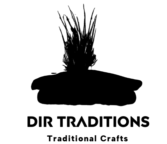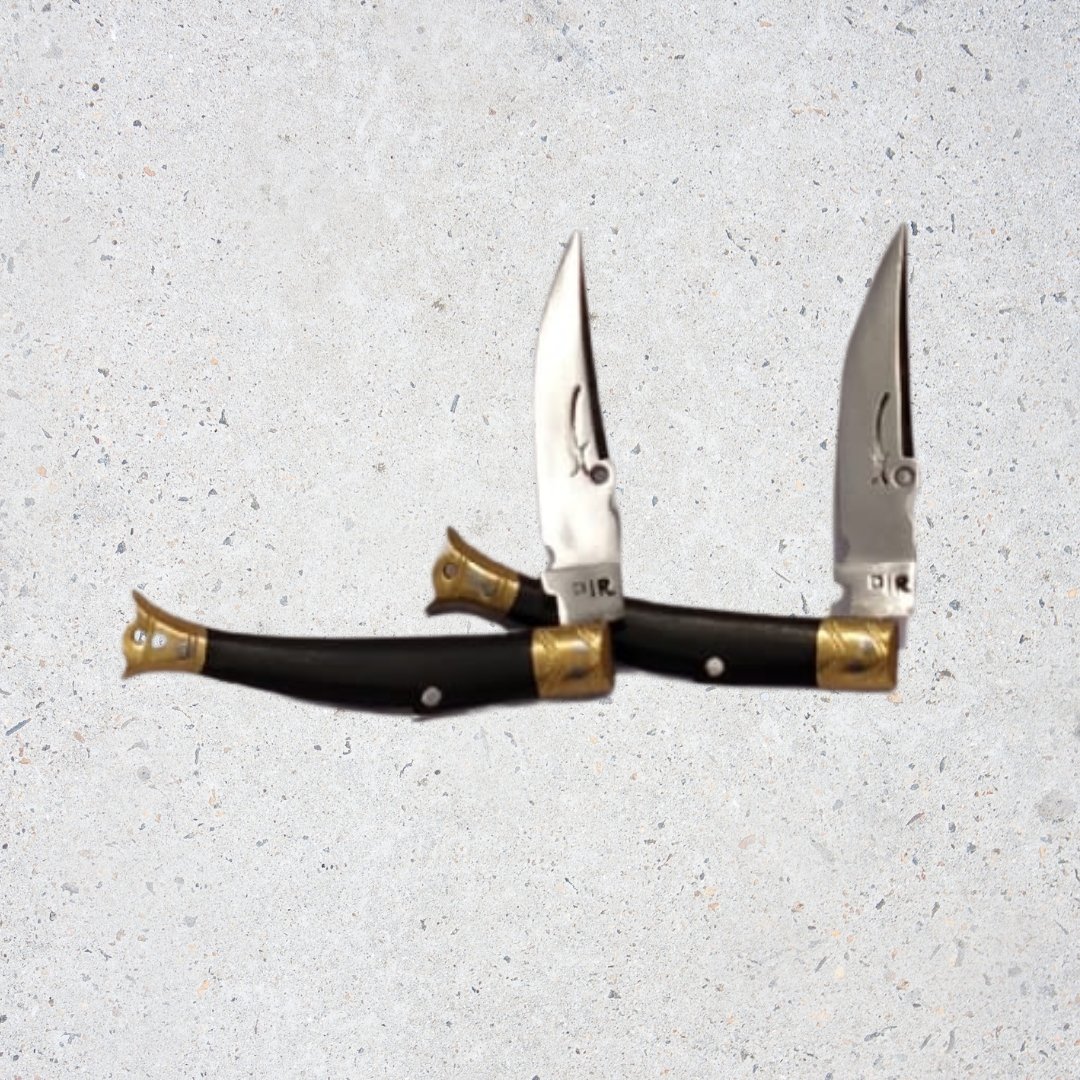Dir Knife – A Timeless Blade from the Mountains of Pakistan
In the scenic mountains of Khyber Pakhtunkhwa, Pakistan, lies the district of Dir, a region known not only for its breathtaking landscapes but also for its age-old traditions. Among the cultural heritage of Dir, the Dir Knives stands out as a symbol of craftsmanship, strength, and identity. This handmade weapon has transcended generations, carrying with it tales of valor, utility, and art. Whether used in daily tasks, ceremonial events, or collected as an artifact, the Dir Knife continues to hold a special place in the hearts of many.
Origin and Historical Significance of the Dir Knife
The Dir Knives, also known locally as Chaqoo-e-Dir, has roots that trace back several centuries. Initially designed for survival and defence in the rugged terrains of Dir, it gradually became an essential part of local culture. Warriors, hunters, and tribesmen carried it as a part of their attire, not only for protection but also as a mark of honor.
Traditionally, every young man in Dir was expected to own a Dir Knives by the time he reached adulthood. It was often gifted during ceremonies or passed down through generations, making it a family heirloom. Its history is deeply tied to the region’s tribal customs, warfare strategies, and hunting traditions.
Craftsmanship and Materials Used
Creating a Dir Knives is not a mere act of metalworking—it is a form of art. Skilled blacksmiths in Dir villages forge these blades by hand, often using traditional tools and techniques passed down from their ancestors. Here’s a detailed look at the components:
Blade:
Made from high-carbon steel or recycled automobile parts, the blade of a Dir Knives is known for its durability and sharp edge. Some smiths use spring steel from old vehicles to create a strong and flexible blade.
Handle:
The handle is often made from horn, wood, or bone, depending on the buyer’s preference. It is carved meticulously to fit comfortably in the hand while adding aesthetic value.
Sheath:
The leather sheath, called miyan, is usually handmade with decorative patterns. Some are simple, while others are dyed and stitched with ornate embroidery, symbolising tribal identity.
Types of Dir Knives
There is no one-size-fits-all when it comes to a Dir Knives. Different types are available based on use, size, and craftsmanship. Here’s a breakdown:
| Type | Description | Common Use |
|---|---|---|
| Hunting Dir Knives | Larger, heavier blade for skinning and butchering | Hunting, outdoor use |
| Everyday Dir Knives | Medium-sized with a practical design | Utility, daily tasks |
| Decorative Dir Knives | Intricately designed, sometimes engraved | Collecting, gifting |
| Ceremonial Dir Knives | Often gold-plated or jewelled, not used practically | Weddings, traditional events |
| Combat Dir Knives | Pointed tip with reinforced handle | Self-defence, martial use |
Cultural Importance in Dir Society
In Dir, a man’s knife is more than a tool—it’s a part of his identity. From tribal gatherings to weddings and festivals, men wear their Dir Knives proudly on their waist. It is also used in traditional dances, such as the Attan, where performers carry knives as a part of their attire.
The Dir Knives is also a symbol of hospitality and honor. Elders often keep engraved knives as a status symbol, and guests may be gifted a knife as a token of respect and friendship.
Modern Adaptations and Global Demand
Over the years, the demand for the Dir Knives has grown beyond local borders. Tourists visiting northern Pakistan are fascinated by the craftsmanship and cultural value of the knife. Many buy it as a souvenir or display piece.
In recent times, craftsmen have begun exporting these knives through e-commerce platforms and social media. Knife collectors and weapon enthusiasts worldwide appreciate the handmade quality and unique story behind each Dir Knifes. Some custom orders even include name engravings, special designs, or rare materials.
Challenges Faced by the Dir Knives Industry
Despite its historical and cultural value, the Dir Knifes industry faces several challenges:
-
Lack of Marketing:
Many skilled artisans lack access to platforms where they can market their products effectively. -
Modernisation:
With the rise of factory-made tools, handmade knives face stiff competition. -
Raw Material Costs:
Rising prices of quality steel and handle materials are making production expensive. -
Limited Government Support:
Very few initiatives exist to promote or preserve this traditional craft.
Suggestions to Preserve and Promote the Dir Knife
To ensure the legacy of the Dir Knife continues, the following steps should be taken:
-
Government Support: Establish training centers and grants for local artisans.
-
Online Marketplaces: Encourage craftsmen to use platforms like Etsy, Daraz, and Amazon.
-
Cultural Festivals: Promote the Dir Knifes in tourism expos and cultural events.
-
Documentaries & Media: Use YouTube and other media to tell the story of the Dir Knifes and its makers.
-
Educational Programs: Introduce vocational training in local schools focusing on knife making.
Caring for Your Dir Knifes
Maintaining a Dir Knife ensures its longevity and performance. Here are a few tips:
-
Cleaning: Wipe the blade clean after use, especially if it comes in contact with water or food.
-
Sharpening: Use a whetstone regularly to maintain the edge.
-
Storage: Store in a dry place with its sheath to prevent rust.
-
Oil the Blade: Occasionally oil the blade to keep it rust-free.







Reviews
There are no reviews yet.